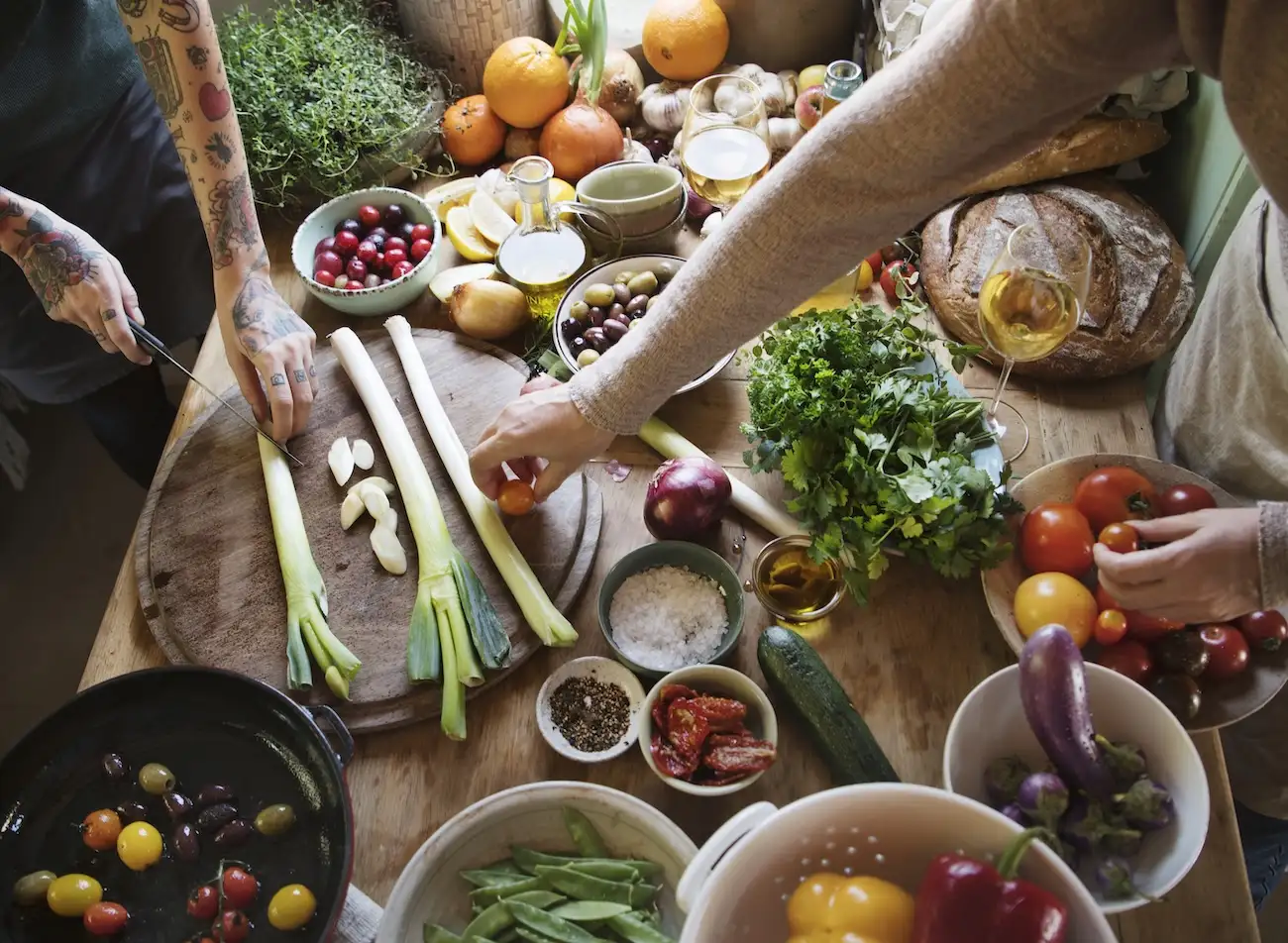Life after sixty often brings new freedom, a lighter work schedule, more time for hobbies, and maybe a grandchild or two. Yet that freedom can stall if meals no longer fuel the body the way they once did. Metabolism slows, taste buds change, and certain nutrients become harder to absorb. Instead of following the same diet you loved at forty, treating food as an evolving partner keeps you strong, clear-minded, and ready for each new adventure.
Why Nutrition Shifts with Age: As muscle mass gently declines and bone density settles, the body demands higher-quality calories rather than more calories. Fiber steadies digestion and blood sugar. Protein repairs tissue and preserves muscle. Adequate fluids keep joints cushioned and the mind sharp. Focusing on these core needs turns every plate into a small investment in future vitality.

Filling the Plate with Fiber: Imagine fiber as a friendly traffic officer inside your gut. It slows sugar’s rush into the bloodstream, prevents constipation, and even helps lower cholesterol.
Beans, lentils, oats, berries, apples with their skins, and hearty vegetables like broccoli or sweet potatoes supply both soluble and insoluble fiber.
Aim to include a fiber source at each meal. Sprinkle oats into a morning smoothie, blend chickpeas into hummus for lunch, and roast mixed vegetables for dinner. Gradually increasing fiber and pairing it with enough water keeps digestion comfortable.
Lean Protein: Muscle’s Best Friend: The body breaks down protein into amino acids that repair cells, build enzymes, and maintain immunity. After sixty, protein requirements stay steady or even rise a little because muscle rebuilds less efficiently. Lean poultry, fish, eggs, tofu, and low-fat dairy supply high-quality protein without excess saturated fat. Plant options such as black beans, quinoa, or edamame widen the menu and add extra fiber. Spread protein across the day rather than loading it only at supper.
Hydration: The Often Ignored Nutrient: Thirst signals weaken with age, so relying on a dry mouth to remind you to sip water may not work. Mild dehydration can leave you tired, dizzy, or foggy-headed, symptoms often blamed on aging itself. Keep a refillable bottle within reach, add slices of citrus or cucumber for flavor, and enjoy water-rich foods like melon, cucumbers, and soups.
Herbal tea counts toward fluid goals and can add calming rituals to the day. Traditional coffee and moderate tea also hydrate, though limiting caffeine later in the afternoon protects restful sleep. If medication requires fluid limits, follow your doctor’s advice while still aiming for consistent small sips.
Micronutrients That Matter: Even a well-rounded menu still needs a few key vitamins and minerals in the spotlight. Calcium and vitamin D work as a team to keep bones sturdy, so include dairy foods, fortified plant milks, and a bit of daily sunlight whenever you can. Vitamin B12 absorption often slows after sixty; adding eggs, fish, or fortified cereals helps, and your doctor may suggest a supplement if blood work shows you are running low.
Magnesium and potassium support steady blood pressure and relaxed muscles; nuts, leafy greens, bananas, and legumes are easy ways to top them up. Bring a short food diary to your routine wellness visit so your provider can see where any gaps remain and advise on supplements if needed.
Start with a breakfast that pairs whole grains and protein. Overnight oats mixed with almond butter and blueberries carry fiber, protein, and antioxidants. Lunch can feature a vibrant salad base of spinach topped with grilled chicken, quinoa, roasted peppers, and a drizzle of olive oil. Dinner might offer baked cod with a side of steamed broccoli and sweet potato wedges.
Snacks matter too. Swap pastry or chips for a small handful of almonds and an apple, cottage cheese with pineapple, or raw carrot sticks dipped in hummus. These choices steady blood sugar and prevent the late afternoon slump.
Plan and Prep one or two meals ahead. Washing berries, chopping vegetables, or cooking a batch of brown rice on Sunday makes healthy choices quicker than takeout on busy days.
Upgrade Favorites rather than ban them. Replace half the ground beef in chili with black beans or choose whole wheat pasta and add extra vegetables to the sauce.
Taste the Rainbow by turning grocery trips into color hunts. Each new hue adds different antioxidants and keeps eating exciting.
Share Meals with friends. Potluck dinners or cooking clubs turn healthy eating into a social event and help control portion sizes.
Energy should feel steady, not spiking, then crashing. Good hydration keeps joints loose and skin supple. Consistent fiber usually means regular, comfortable digestion. If bloating, heartburn, or unexplained fatigue linger, note meal patterns and talk with a registered dietitian or primary care provider. Medicare covers certain nutrition counseling services for diabetes or kidney disease, and wellness visits are a perfect time to discuss diet.
Nutrition pairs best with movement. Gentle walks, yoga, or gardening help muscles use the protein you eat and support bone health. Sleep rounds out the trio. Aim for seven hours in a cool, dark room. A balanced diet, regular activity, and solid rest form a self-reinforcing cycle that fuels each healthy choice.
Healthy eating after sixty is less about strict rules and more about adding color, texture, and hydration step by step. Place fiber-rich food on every plate, spread lean protein throughout the day, and keep water within reach. Season meals with herbs to reduce salt, cook with olive oil instead of solid fat, and celebrate small wins like choosing fruit over pastry.
During annual visits, check in with your health care team, and bring questions about supplements or interactive meal plans. Each refinement you make today builds energy for tomorrow’s plans, whether teaching a grandchild a new recipe, traveling to that bucket list city, or mastering a tai chi routine in the park. Nourish your body with intention, and it will repay you with vigor, clarity, and the stamina to enjoy many chapters ahead.